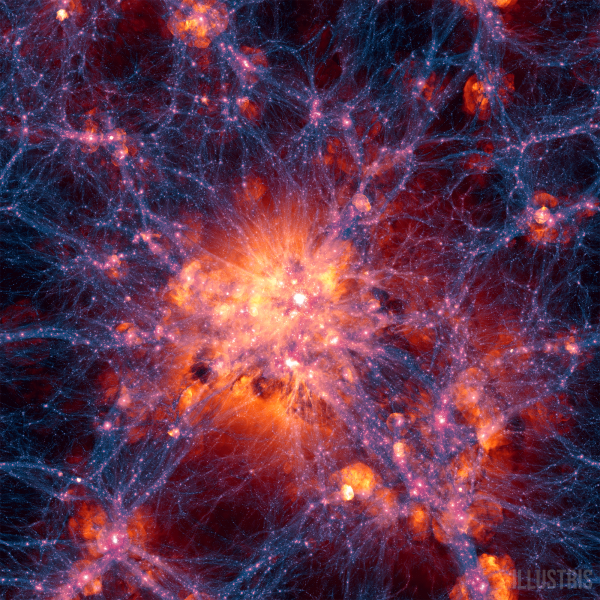“These neutrino observations are so exciting and significant that I think we’re about to see the birth of an entirely new branch of astronomy: neutrino astronomy.” -John Bahcall
From the Hubble expansion of the Universe to isotropy and homogeneity to the light elements to the leftover radiation glow to the formation of large-scale structure in the Universe, the Big Bang is by far the most successful scientific description of the Universe of all-time.
 Image credit: Illustris Simulation, M. Vogelsberger, S. Genel, V. Springel, P. Torrey, D. Sijacki, D. Xu, G. Snyder, S. Bird, D. Nelson, L. Hernquist, via http://h-its.org/english/press/pressreleases.php?we_objectID=1080.
Image credit: Illustris Simulation, M. Vogelsberger, S. Genel, V. Springel, P. Torrey, D. Sijacki, D. Xu, G. Snyder, S. Bird, D. Nelson, L. Hernquist, via http://h-its.org/english/press/pressreleases.php?we_objectID=1080.
Even with the add-ons of dark matter, dark energy and inflation, the Big Bang still thrives, accounting for all of those phenomena and leading to observable predictions that have since been verified. But there's one thing it's predicted that we haven't been able to test: a cosmic background of low-energy, relic neutrinos. We know they need to be there if the Big Bang is correct, but we don't know how to successfully detect them.
Go read the whole story of the Big Bang's last great prediction!


The original version of this post (http://scienceblogs.com/startswithabang/2013/07/17/the-second-most-abun…) includes a number of comments and discussions. Hopefully they won't all be replicated here :-)
"... the Big Bang is by far the most successful scientific description of the Universe of all-time". Big swollen words! The Big Bang is not a theory. It is a model. It is a model periodically revamped to take into account new data and new concepts. New concepts like dark matter and dark energy. New concepts which scholarly express our ignorance of the main composition of the universe. What about some modesty here!?!
What if we had a Super Kamiokande-type neutrino detector with a particle accelerator running through it, shielded of course from the water. If we had nuclei accelerated in the beam to sufficiently high relatvistic energies that they had a significant recoil cross section with the relic thermal neutrinos, we might get a small number of neutrinos which recoiled with enough energy to create a signal in the surrounding Super-Kamiokande.